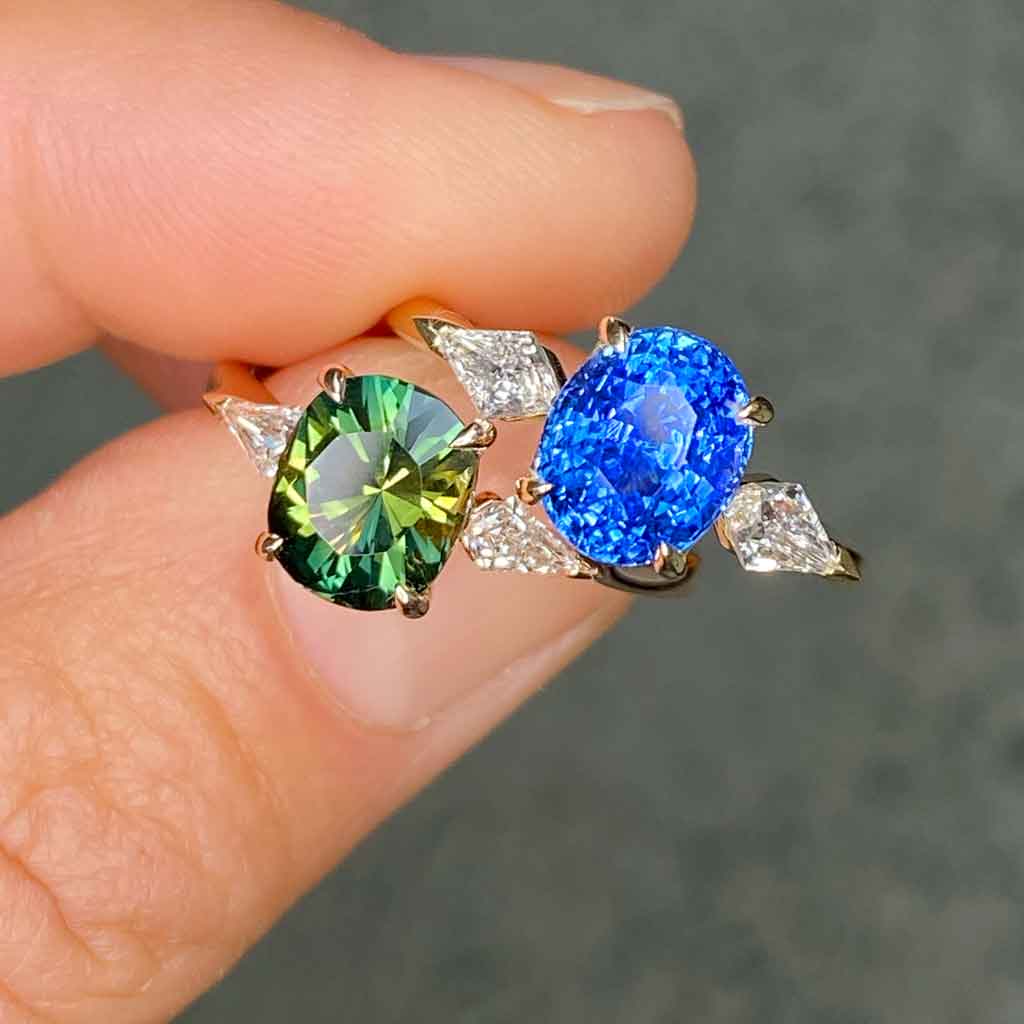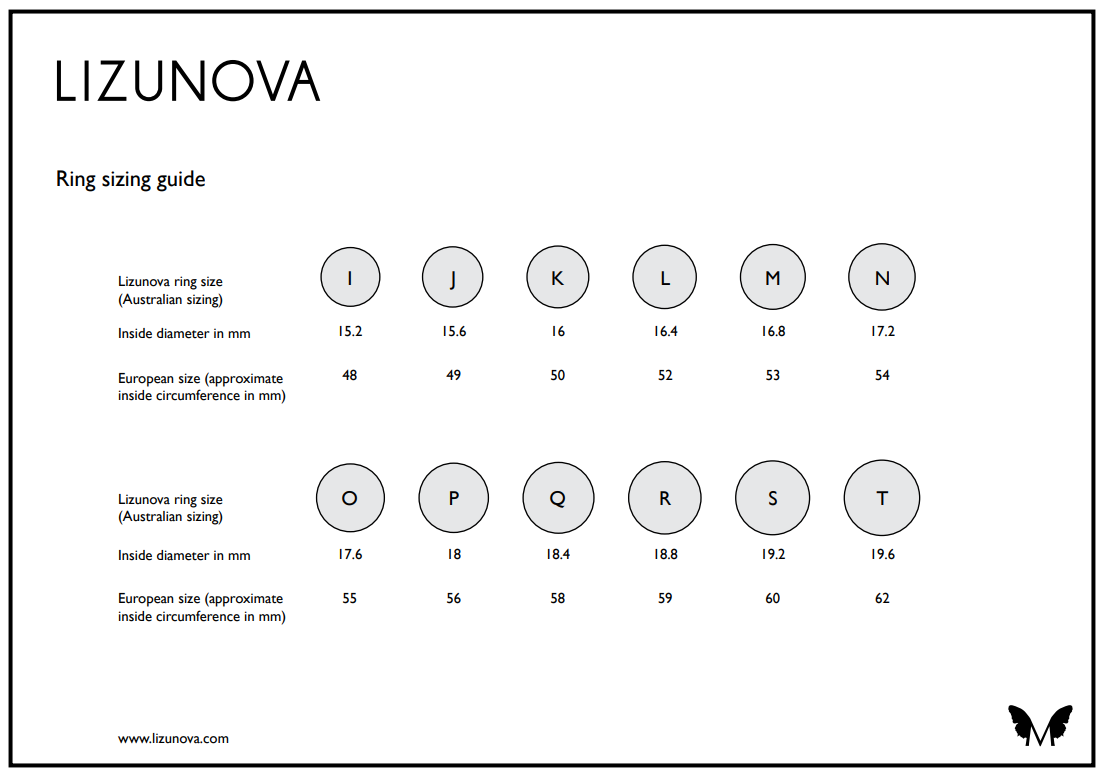Timeless Elegance: A Guide to Sapphire Engagement Rings
Welcome to our guide on sapphire engagement rings where we look at the provenance, characteristics, colours and value of the sapphire gem, as well as its use in jewellery. Engagement rings are a meaningful, heartfelt expression of a couple's commitment to build a life together and for most people, they are the most significant piece of jewellery purchased in their lifetime. Natural diamonds have been the traditional centre stone of choice for engagement rings (popularised by the 1947 De Beers campaign, A Diamond is Forever), however sapphires, for centuries used in important jewellery such as royal crowns, have been gaining popularity as the engagement ring centre stone due to their beauty, uniqueness, durability and value for money compared to diamonds.
What is a sapphire?
A sapphire is a precious gemstone made of aluminium oxide (α-Al2O3) that belongs to the corundum family, of which ruby is also a member. It's second only to diamond in terms of hardness, measuring 9 on the Mohs hardness scale. Sapphire is not only beautiful and unique, but also very durable, making it perfect for everyday jewellery, such as a sapphire engagement ring.
Sapphire colours
Sapphires are primarily known for their rich blue hue (think royal blue and cornflower blue sapphires), but they actually come in a rainbow of stunning colours, such as green, teal, yellow, pink, orange, lilac, purple, grey, white (colourless), black and every shade in between. If that were not enough, sapphires also occur in bi colour or parti colour as well – typically blue, yellow and green combining in one gem to a most magical and completely unique effect.
But what gives sapphires such varied colour? Trace elements present during their formation, such as iron, titanium, chromium, vanadium, nickel and magnesium are the answer. For instance, traces of iron and titanium result in striking blue shades, and the more iron a sapphire contains, the darker the blue. Traces of iron give a sapphire its green colour, while chromium creates pink hues, and the more chromium a stone contains, the deeper the pink. Corundum with a sufficient amount of chromium to make it red is called ruby, which is essentially a red sapphire! As each gem has its very own composition, these variations are what makes each sapphire truly unique and personal.
Sapphire characteristics
Sapphires are exceptionally sparkly, due to their high refractive index and lustre which allows them to reflect light brilliantly.
Sapphires sometimes exhibit asterism - a phenomenon where they display a star pattern when cut into cabochon shapes, adding an extra element of intrigue to these already mesmerizing gemstones.
No two sapphires are exactly alike - each possesses its own unique combination of colour saturation, clarity, size and cut. This individuality gives each sapphire engagement ring its own distinct character and charm.
Sapphires have been cherished throughout history for their symbolism and beauty. They've adorned the crowns of royalty and signify wisdom, loyalty, and nobility. In fact, Prince William proposed to Kate Middleton with his late mother's iconic blue sapphire engagement ring!
Whether you choose a classic cornflower blue or opt for more unconventional shades like green or teal sapphires, these gemstones add uniqueness and sophistication to any engagement ring design.
So if you're looking for something extraordinary that will stand the test of time both aesthetically and symbolically, a sapphire engagement ring might just be the perfect choice!
Sapphire provenance
Sapphires are found in various locations around the world, and each region produces gems with unique characteristics and colours.
One of the most historically famous sources of sapphires is Kashmir, located in the Himalayan Mountains. The sapphires from this region are highly sought after for their intense blue colour and velvety appearance. However, due to limited supply, Kashmir sapphires are extremely rare and valuable and are more of a collector's item.
Another well known, and more plentiful, source of sapphires is Sri Lanka (formerly known as Ceylon). This is where many gorgeous blue sapphires in the sought after royal blue and vivid cornflower blue hues come from, that are prized for their superb colour, lustre and brilliance.
Australia is also a significant producer of high quality sapphires, particularly Queensland and New South Wales. Australian sapphires can range in colour from deep blue to teal, green and yellow, as well as the more rare and sought after lighter seafoam green and teal hues. Many Australian sapphires combine two or three colours, eg blue green (also known as peacock sapphire, as it resembles the colours of a peacock feather), blue green yellow, or blue yellow. These colours can be blended or more strongly delineated, with distinct colour zoning visible in the stone. The colours you can see in these beautiful sapphires typically change when the gems are viewed from different angles and in different lighting conditions, making them truly fascinating and completely unique!
Other notable sources of sapphire include Thailand, Madagascar, Myanmar (Burma), Cambodia, and Montana (USA).
Each location has its own geological conditions that contribute to the formation of these stunning gems. From ancient mountain ranges to volcanic activity millions of years ago, it's fascinating how nature creates such exquisite treasures.
So next time you admire a gorgeous blue, green or vibrant pink sapphire engagement ring – remember that the centre stone likely came from one of these breathtaking regions around the globe!
Are sapphires valuable?
This is a question that often comes to mind when considering purchasing a sapphire engagement ring. The answer is, yes, sapphire is indeed a very valuable gemstone, and part of the precious four family, which also includes diamond, ruby and emerald.
Sapphires have been prized for centuries for their beauty and durability. They rank just below diamonds on the Mohs scale of hardness, making them an excellent choice for everyday wear. Their value is determined by various factors such as colour, clarity, cut, and carat weight, as well as provenance.
Blue sapphires are among the most sought after colours, and the most valuable hue of blue sapphires is the rich blue, known as the royal blue (eg the famous Princess Diana’s engagement ring). Blue sapphires with intense saturation and vividness, a shade or two lighter than the royal blue, are known as the cornflower blue. These vivid coloured blue sapphires are also highly valued and rather rare. Another very rare and valuable sapphire colour is the delicate blend of pink and orange, known as Padparadscha sapphire, owing their colour to traces of chromium and iron. The word Padparadscha is derived from the Sanskrit word describing colour of a lotus flower. These sapphires can be more vivid or pastel in colour, and the balance of pink and orange can vary, with some stones more pink and others more orange.
Sapphires of other colours, such as pink, yellow, green, teal, lilac and orange are also valuable, with factors such as rarity and intensity of colour, clarity, carat weight, cut and origin all contributing significantly to their value.
Is sapphire a suitable centre stone for an engagement ring?
In addition to its beauty, brilliance and uniqueness, sapphire is a durable gemstone that makes a great centre stone choice for an engagement ring. Ranking at 9 on the Mohs scale, second only to diamonds, sapphires can withstand everyday wear and tear without losing their brilliance or colour.
While blue sapphires are the most well known variety, with so many exquisite colours to choose from, such as green, teal, pink, yellow, parti / bi colour and the rare Padparadscha, you can definitely find a stone that reflects your personal style or holds special meaning to you as a couple.
In the traditional lore, sapphires symbolise truth, sincerity, faithfulness and loyalty - qualities essential in any long lasting relationship. They have been used in important jewellery since ancient times, and became popular as an engagement ring centre stone in 14th and 15th centuries.
What is the best colour sapphire for an engagement ring?
This is a truly personal choice and varies greatly from one couple to another! Blue sapphires have been an enduring and classic choice as an engagement ring centre stone. Another popular option is green sapphires, which range from soft pastel shades to deep forest greens. These unique and rare gems bring a touch of nature inspired beauty to any ring setting and look wonderful in any metal colour, be it platinum / white gold, yellow gold or rose gold.
For those looking for a stone that resembles the colours of the ocean, teal sapphires offer a wonderful choice, with their gorgeous combination of blue and green tones. These captivating sapphires are often chosen by couples who love to spend their time by the ocean, and are looking to step away from the conventional in their engagement ring design.
Pink sapphires add a romantic and feminine touch and can vary in colour intensity from deep magenta to pastel pink. The rare Padparadscha sapphires showcase an exquisite orangey pink colour reminiscent of sunset skies or a lotus flower, after which they are named. Pink sapphires look gorgeous combined with warm hues of rose gold or yellow gold, but can also be set in white gold or platinum if cool tones are desired.
Sun kissed yellow sapphires offer warmth and vibrancy, making them perfect for those who want their engagement ring to stand out from the crowd. With its wide range of hues from more subtle, pastel yellows to saturated, golden hues, yellow sapphires are a beautiful and timeless choice sure to make a statement. They look particularly lovely in yellow gold ring settings, which enhances their colour.
Parti sapphires, many of which are native to Australia, are another unique, fabulous choice for a unique engagement ring – even if the ring design is as simple as a solitaire, the uniqueness of the sapphire itself will ensure you will never see a ring like yours on someone else! Parti sapphires look great in any gold colour.
Sapphire engagement ring settings
Sapphire ring designs vary hugely, and can be as simple and timeless as a classic solitaire setting or as intricate and complex as a cluster design.
The timeless solitaire ring design features a single sapphire held in place by prongs or a bezel. The simplicity of this setting allows the sapphire to be the focal point, without distractions of a complex design or additional diamonds or gems. This ring design can also include a hidden halo of diamonds, visible only from the side of the ring.
Another simple and beautiful design is a solitaire with diamonds in the band, adding extra sparkle to the ring, while keeping all attention on the centre sapphire.
Cluster settings are a great way to truly personalise your ring design, and can feature any number and shape diamonds next to the centre sapphire, and can be symmetrical or asymmetric.
For those who prefer a more intricate look, halo settings are an excellent choice. These settings surround the centre stone with smaller diamonds or gemstones, creating a dazzling frame that accentuates the sapphire's colour and adds extra sparkle. Again, the possibilities for personalisation of this design are endless – halo diamonds can be smaller or larger, all the same size or graduated, round or include other shapes, such as marquise, pear cut or baguette, to name a few.
Another option is a three stone, or trilogy setting which typically includes two smaller side stones, e.g. diamonds, flanking a larger centre sapphire. This ring design symbolises past, present, and future making it significant for engagements or milestone anniversaries. There are many shoulder diamond shapes available, such as kites, epaulettes, pear shape, oval, round, baguette, heart, cadillac and trillion to name a few, resulting in endless combinations to choose from, each with its own, distinct look.
Toi et moi (you-and-me) settings featuring two centre stones, are a popular, contemporary ring design and can include two sapphires of different shapes and colours, a sapphire and a diamond, or a sapphire and another gem, such as an emerald or ruby.
And then there are completely unique, one off asymmetric ring designs, created around the stones you pick and the unique story you want your ring to tell!
With so many styles to choose from, it's easy to find one that complements your personal taste and lifestyle while highlighting the beauty of your precious sapphire.
Caring for your sapphire engagement ring
A clean ring is a beautiful ring! Everyday wear will inevitably result in dirt accumulating around and under the settings of your ring and regular cleaning will help maintain your ring's sparkle. While sapphires and diamonds are durable, they are not indestructible, and protecting your ring from impact and harsh chemicals is essential to ensure your ring looks great for decades to come.
Here are our tips to help you maintain the beauty and brilliance of your precious gemstone - for more detail head to our Jewellery Care Guide:
Regular Cleaning
Gently clean your sapphire ring with warm water and good quality dishwashing soap using a soft toothbrush. Rinse thoroughly and pat dry with a soft, lint-free cloth. Most of the dirt will accumulate under the sapphire settings and over the diamonds, if your ring has them, as diamonds repel water and attract oil, so gently brushing under the settings will remove dirt and allow your sapphire to sparkle again.
Avoid Harsh Chemicals
Keep your sapphire away from harsh chemicals such as bleach, chlorine, and other household cleaners. These can damage the stone's surface and may affect its colour.
Proper Storage
When not wearing your sapphire engagement ring, store it in a jewellery box or pouch separate from other pieces to prevent scratching or potential damage.
Avoid Impact
While sapphires are durable, they can still chip or crack if subjected to rough handling or impact. Be cautious when engaging in activities that may expose your ring to potential harm. We recommend removing your ring prior to gym visits, gardening, rock climbing or any other activity which can damage your ring.
Professional Inspection
Just like a car that requires regular inspections to function well, precious jewellery that's worn every day also needs regular maintenance. We recommend regular settings check and cleaning of your ring every 6-12 months, and all Lizunova rings come with complimentary settings check and ultrasonic cleaning service.
By following these simple care guidelines, you can ensure that your cherished sapphire engagement ring remains as captivating as the day you first received it!
To cherish a lifetime
The variety of colours afforded by sapphires and the multitude of engagement ring design options allow you to express your and your partner’s personal style when choosing a ready to wear sapphire engagement ring or commissioning a bespoke ring. No matter what colour or design you choose, a sapphire engagement ring will undoubtedly make a lasting impression on both you and your loved one and be cherished a lifetime.
If you're seeking a unique alternative to a traditional diamond engagement ring while still maintaining elegance and durability, feel free book a complimentary engagement ring design appointment and we can explore the range of possibilities together.




